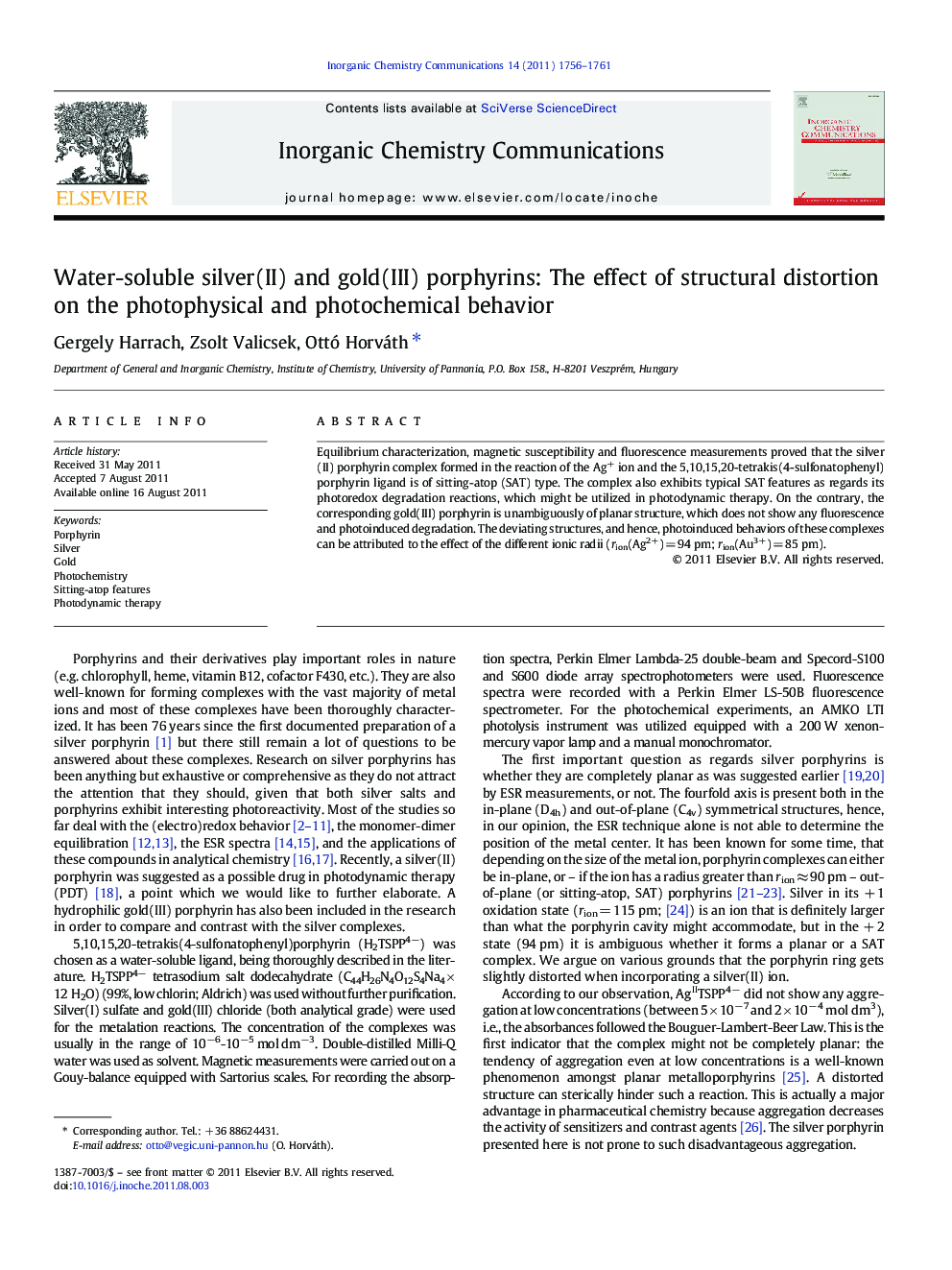| Article ID | Journal | Published Year | Pages | File Type |
|---|---|---|---|---|
| 1304165 | Inorganic Chemistry Communications | 2011 | 6 Pages |
Equilibrium characterization, magnetic susceptibility and fluorescence measurements proved that the silver(II) porphyrin complex formed in the reaction of the Ag+ ion and the 5,10,15,20-tetrakis(4-sulfonatophenyl)porphyrin ligand is of sitting-atop (SAT) type. The complex also exhibits typical SAT features as regards its photoredox degradation reactions, which might be utilized in photodynamic therapy. On the contrary, the corresponding gold(III) porphyrin is unambiguously of planar structure, which does not show any fluorescence and photoinduced degradation. The deviating structures, and hence, photoinduced behaviors of these complexes can be attributed to the effect of the different ionic radii (rion(Ag2+) = 94 pm; rion(Au3+) = 85 pm).
Graphical abstractKinetically labile Ag(II)-5,10,15,20-tetrakis(4-sulfonatophenyl)porphyrin, deviating from the corresponding coplanar Au(III) complex, displays photophysical and photochemical behavior characteristic for metalloporphyrins of sitting-atop structure.Figure optionsDownload full-size imageDownload as PowerPoint slideHighlights► Reaction of Ag+ and H2TSPP4− gives a 1:1 silver(II) porphyrin complex. ► This compound of out-of-plane structure displays special photoinduced behavior. ► Its excitation leads to characteristic emission and an irreversible LMCT process. ► The smaller gold(III) ion (rAu3+ = 85 pm vs. rAg2+ = 94 pm) forms in-plane AuIIITSPP3−. ► This complex, deviating from AgIITSPP4−, does not show any photoinduced activity.
